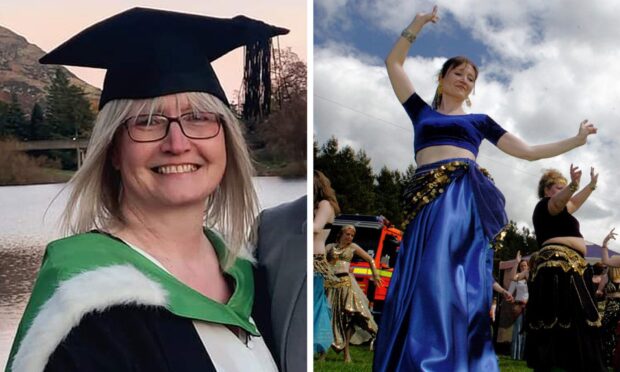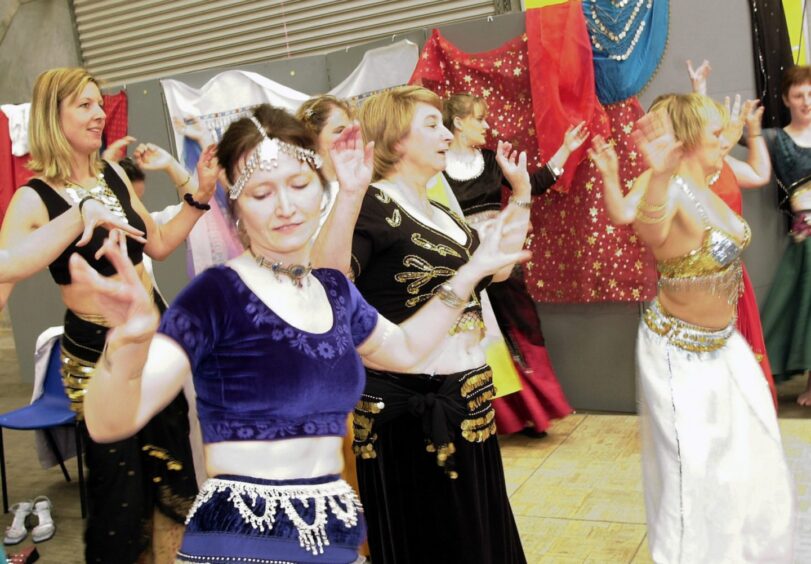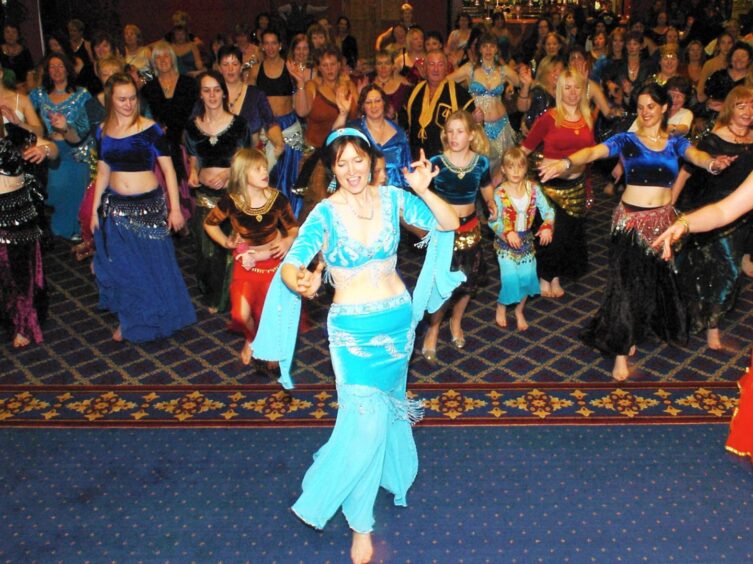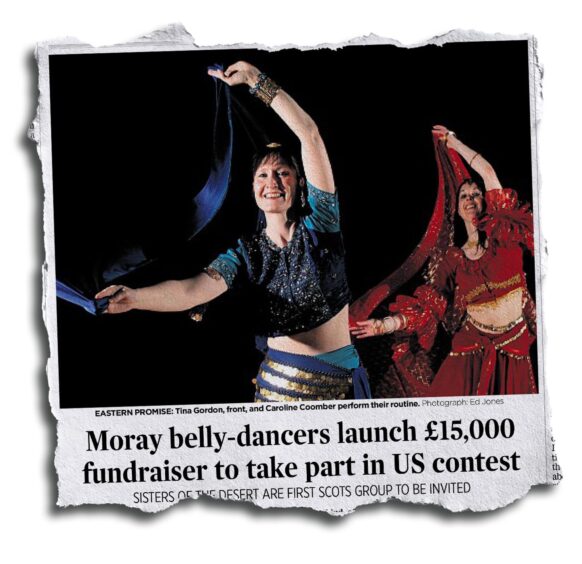Tina Gordon has worn many hats in her time. Or should that be scarves…
The Keith care worker is not only a leading figure in Aberdeenshire council’s adult social care services, having worked her way up across a three-decade career.
But she also used to be a belly dancer.
Now the 60-year-old has added to her already impressive CV by completing a Master’s of science in dementia studies, graduating in November from Stirling University.
It has given her a fresh look at dementia after a life spent working with patients with the condition.
And it has given her hope that advances in treatment, and in the way patients are viewed by society, will chip away dementia’s fear factor.
“For a lot of people, the very word dementia, and having that diagnosis, strikes terror into them,” Tina says.
“But as time goes on, people will see that they can have a better life with dementia, and they can lead a happy life.
“This will have a snowball effect — the more people understand dementia, the more people will be involved because they can feel that they can do something positive about it.”
How other cultures treat dementia
Tina started the Master’s course in 2020 as the UK went into lockdown.
She says one of the best things about doing it was learning from the other students, who came from all around the world.
“It was interesting to see the innovations that are going on everywhere, and the ideas that have come in, from all areas,” she says.
This included different approaches to older generations in other cultures.
“What we seem to forget in modern Western culture is that older people have so much to offer,” she explains.
“I first went to work in a dementia unit years ago and the things that I was taught by people with dementia — they taught me to knit, they gave me recipes. They have a lot to offer, though they tend to be overlooked sometimes.”
Tina’s path from belly dancer to carer
Tina is back at her full-time job as co-ordinator for day services with Aberdeenshire Health and Social Care Partnership, which serves as a go-between for NHS Grampian and Aberdeenshire council.
That career path began 30 years ago when she moved from the Black Country in the West Midlands to Keith and took a job as a carer for in a private home.
It was her first foray into the care services industry but not her first taste of care homes.
She used to perform in them when she was a belly dancer in the Midlands. It was not always pleasant experience, she says now.
“I would never even considered working in an older people’s home because I was also a dancer and going into care homes to perform,” Tina explains.
“I really didn’t like the atmosphere in those places and I thought to myself, no, this is not for me.”
That changed when she moved to Keith. Her care job eventually led her to join the Health and Social Care Partnership, initially as a relief support worker. Her experience of care homes in Moray opened her eyes to how positive shared services can be.
“It was really quite inspirational for me,” she says. “I didn’t understand that care could be like that.
“And I loved it. I love wonderful stories from people and seeing the support they got. I thought it was wonderful, and that’s why I stayed in it.”
The secret popularity of belly dancing in Stonehaven
One thing didn’t change — she kept on belly dancing, teaching classes all over the north-east.
And if you thought belly dancing classes weren’t much of a thing in Aberdeenshire, Tina has news for you.
“You probably don’t even realise they’re there,” she says.
She recalls being in Stonehaven for a class she was teaching and a man coming up to her.
“This guy asks me what’s in my suitcase because he could see something sticking out,” Tina continues.
“I said, do you really want to know? It’s a belly dancing costume. And he said, Well, that’s the best kept secret in Stonehaven because I’d never even have known.”
Tina goes belly dancing all over the world
Tina has since hung up her ‘bedlah’, the fitted costume belly dancers wear.
But she fondly recalls her days belly dancing around the north-east — and further afield.
She was part of Elgin-based dance troupe Sisters of the Desert who in 2007 went to Austin, Texas to perform in an international belly-dancing competition.
She also helped organise in Nairn a successful attempt at scoring the Guinness world record for the largest number of belly dancers performing the same routine for five minutes.
In October 2005, 144 belly dancers performed an Egyptian dance called Kan Tayeb.
“The last time I did belly dancing was when I was 49,” Tina says. “It was when I was going to become a grandma. I said, that’s it, from now on I’ll go and concentrate on my grandchild.”
Why the north-east is best for dementia care
When Tina started the master’s degree at the age of 60, some asked why she was doing it.
“They said, you’ll be retiring in a few years,” she recalls.
“But I’ll always be wanting to support people with dementia, so keeping up to date with things for me is really important.”
Plus, Tina is laying the groundwork for her retirement. She plans to move into voluntary work, which she believes will play an important role in dementia care in the future.
“I think there’s an awful lot that could be done in society that would go hand in hand with medication,” says Tina, who is hopeful about future dementia treatments but warns we “may be waiting a long time for a cure”.
She feels, however, the north-east is ahead of the curve when it comes to community care.
“We’re very good at being a community,” says Tina. “People know people in the neighborhood. And it’s important for people with dementia to stay part of their communities and to be able to depend on their communities and the things that they’ve always known.
“That’s where we have the advantage.”





